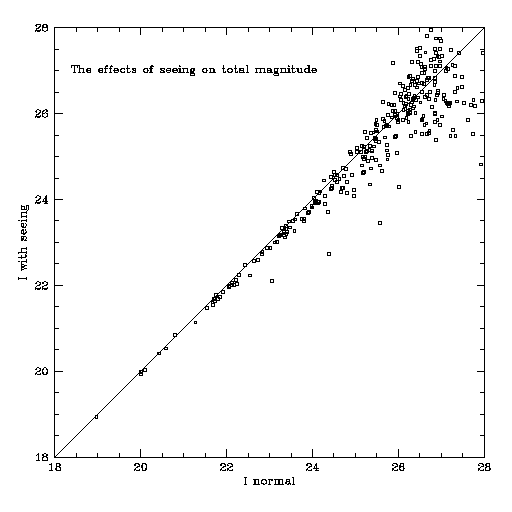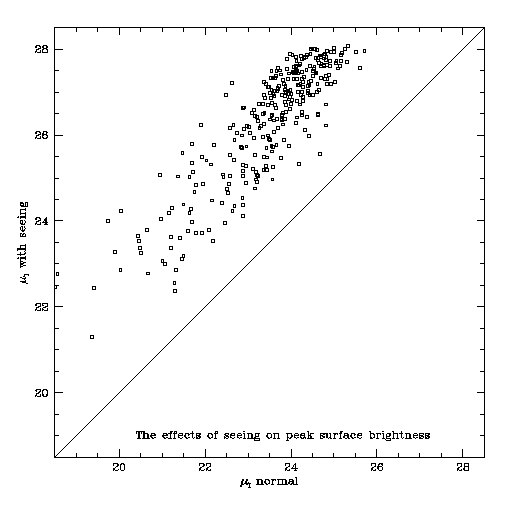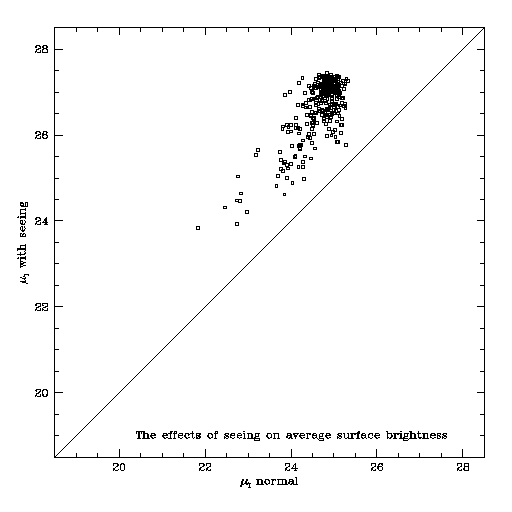
| Summary: The question is: how much will seeing decrease the
surface brightness of galaxies? What effects, if any will there be on the
total magnitudes? To answer these questions, the HDF North image was degraded
to the same
resolution as the VIRMOS 12K images. The galaxies were then redetected using SExtractor and the relevant parameters (total magnitude, surface brightness) compared to the original values. The total magnitudes are found to remain substanstially the same, while the surface brightness drops by about 3-4 magnitudes. |
| The HDF North was assumed to have "perfect" seeing. While obviously
not quite true, the seeing is so much better from HST, that there will not be much difference. The I-band 4Kx4K mosaic image from STScI was convolved with 0.9 arcsecond gaussian kernal. At the scale of the HDF, this is 0.9" / 0.04 "/pix = 22.5 pixels FWHM or sigma=13.5 pixels. The image was then rebinned down to the scale of the VIRMOS images, that is to say, 0.2"/pix. This image was run through SExtractor. The resulting catalog was compared to the original HDF catalog. The results are shown below. |
| This figure shows that the total magnitude is not significantly affected by the seeing. |  |
| This figure shows the effects of seeing on the peak surface brightness. Clearly there is a big effect. There is considerable scatter, but the basic effect is to decrease the surface brightness by 3-4 magnitudes. |  |
| This figure shows the effects of seeing on the average surface brightness. Average surface brightness here means the total flux of the galaxy divided by its total surface area (above the detection threshold) expressed as a magnitude. As with peak surface brightness, the galaxies are significantly fainter when seeing is added. |  |
| The conclusion is that when estimating surface brightness from the VIRMOS images, some sort of deconvolution process is necessary. |